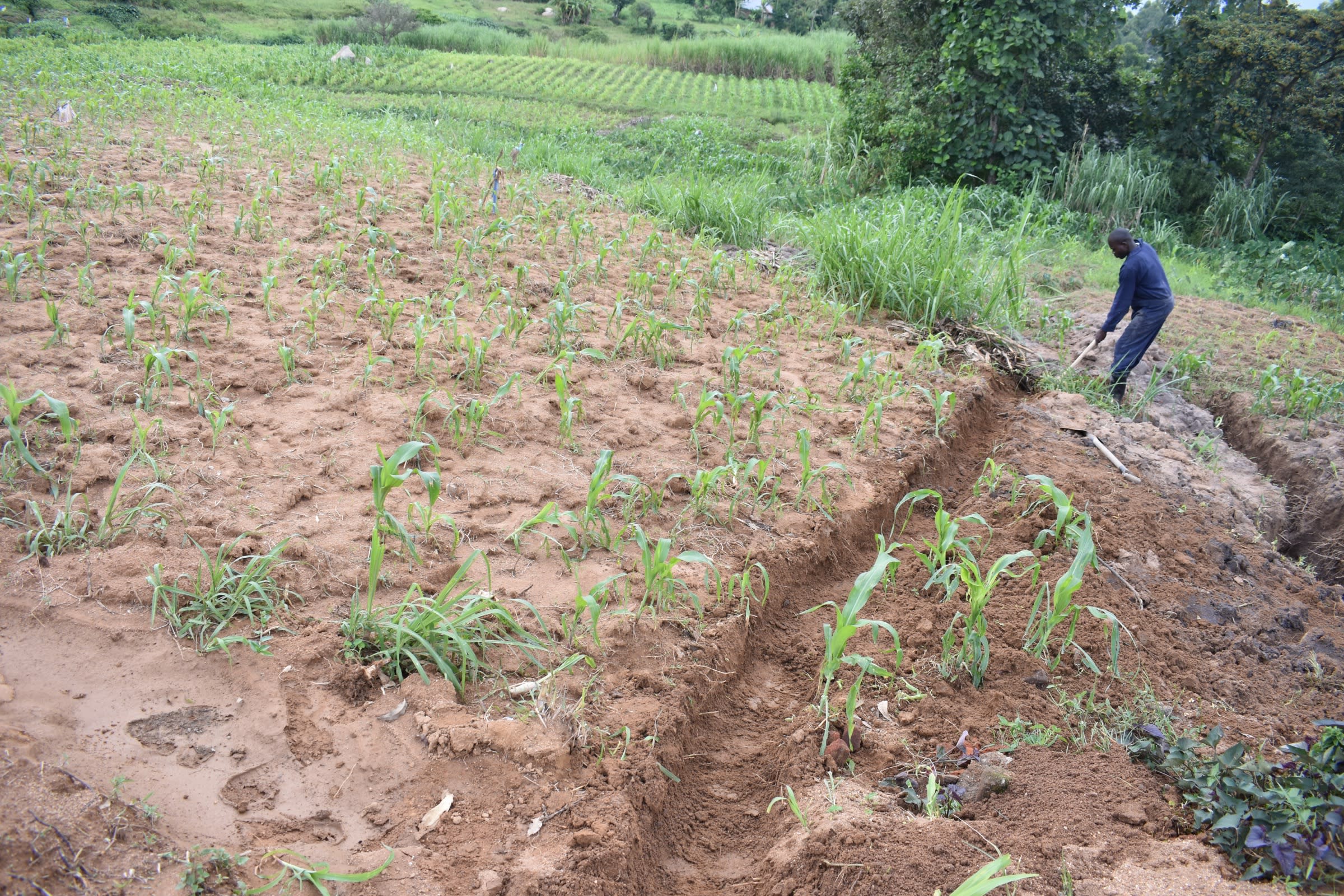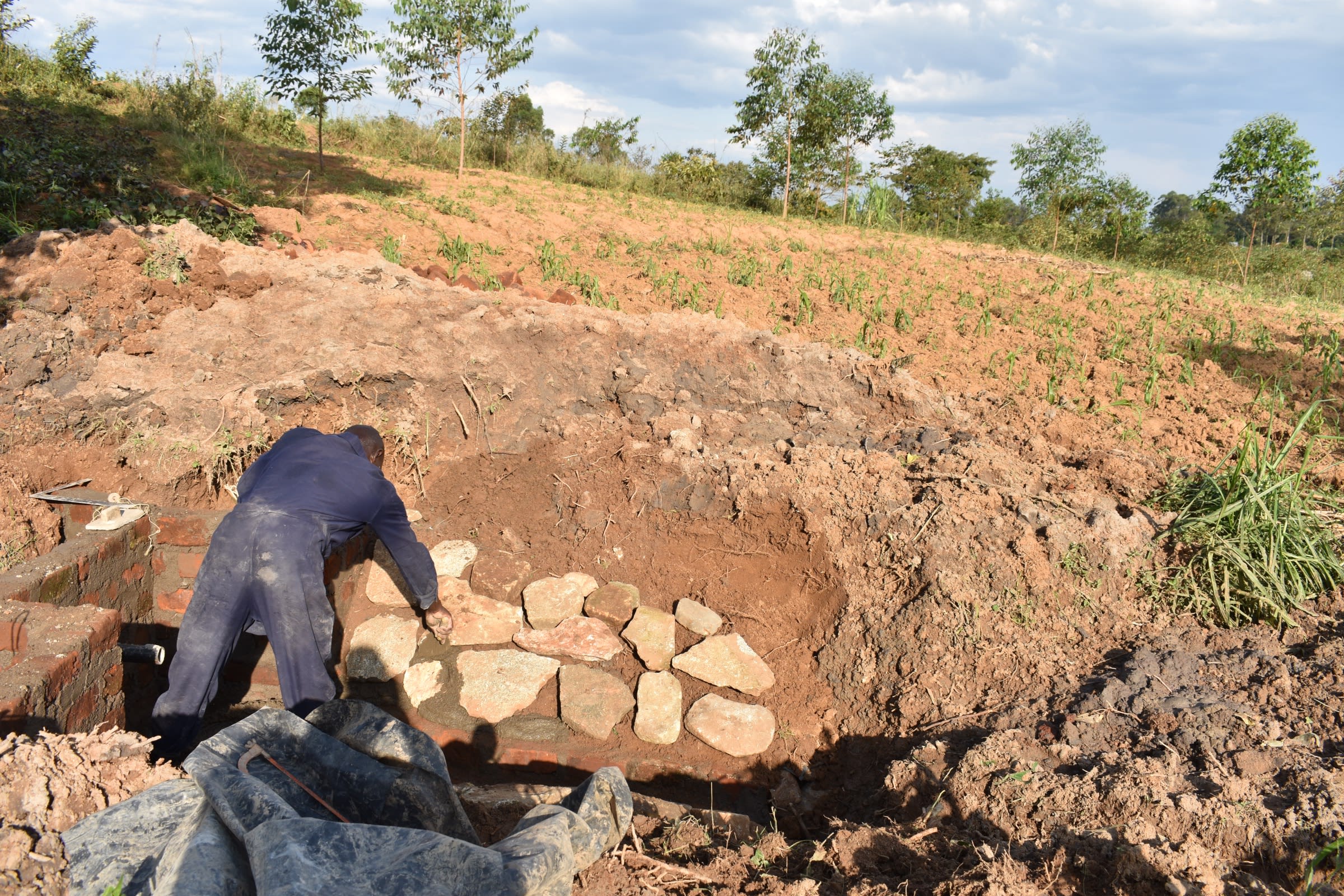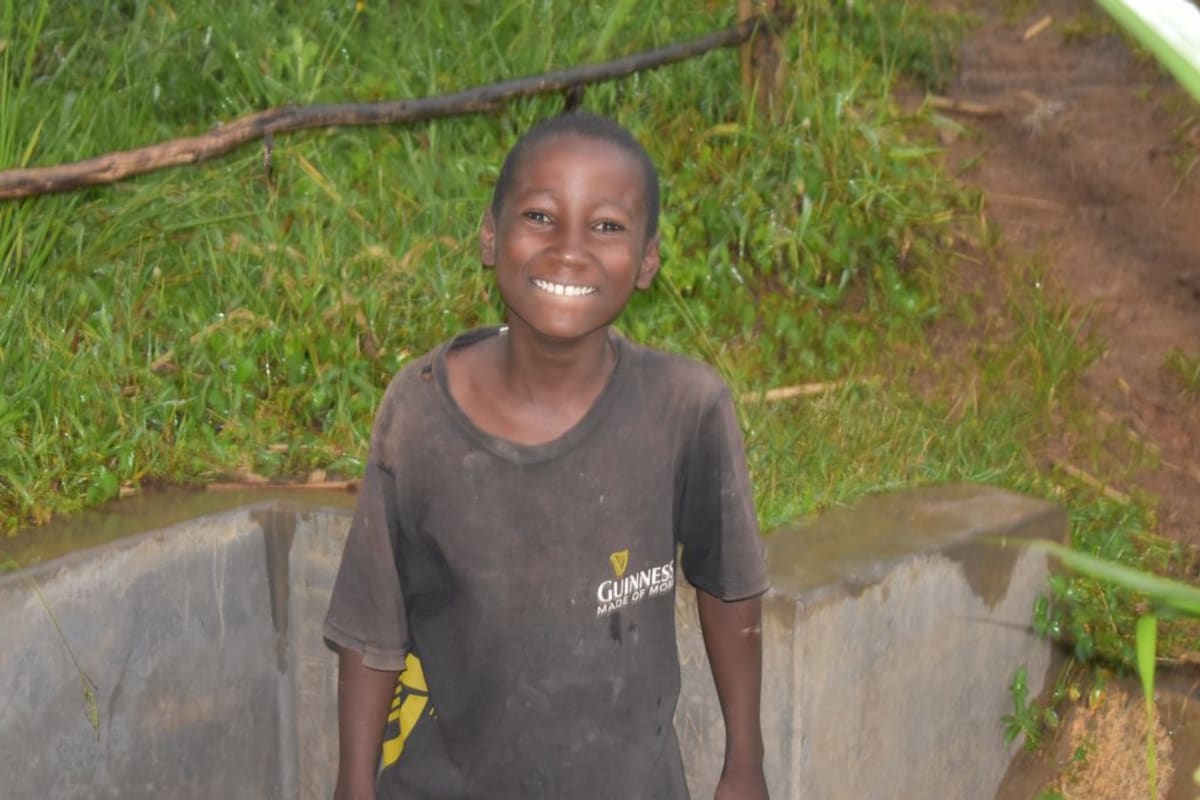The Mushikulu A area has a flat terrain that is green and vegetated due to the community's primary livelihood of farming. Some women in particular also run small businesses like selling fish at the market centers in the evenings. Most homes here are semi-permanent structures.
140 people in Mushikulu A depend on unprotected Wesonga Spring for water. As an open water source, the spring is contaminated and not safe for consumption. Animals come to the spring to drink directly from it, and human activity such as farming also pollutes the water through runoff.
The pooled water has a constant layer of mold and algae which tends to settle below the surface at night. As a result, community members head to the spring as early as possible, even before the sun is up, to fetch the water they will use for drinking that day.
As the sun ascends the sky, the algae start floating to the surface and mixing with the water. At this point, the community can only fetch water for their animals, but it cannot be used either in the kitchen or drinking. Those who have not fetched enough water in the morning cannot do so by evening because the water gets increasingly stirred up and dirty throughout the day from everyone coming to fetch it. Anyone trying to fetch water before dinner either goes home without it or collects the dirtiest water of the day.
Drinking contaminated water leads to waterborne diseases. People here report cases of coughs and stomachaches when they drink the water from this source, in addition to diarrhea and other illnesses. These diseases can be costly to treat, robbing families of their financial resources in addition to their time and energy for other activities.
"If I get clean and safe water, I can add to my days on the earth as I do get sick often while drinking water from here," said Susan Mutondo, a farmer in the village.
The spring is also difficult to access, especially after it rains. The community members step on a log while fetching water, which they placed at the spring's edge to keep them from sliding directly into the mud while fetching water. But the log is always slippery, and many times people have fallen into the water while fetching it. When this happens, people have to wait for hours before the water settles and become safer for fetching again. Children are especially prone to these accidents.
"I have fallen in the water many times when I come collecting water. The piece of timber that we step on is slippery after raining," said Dennis, a young boy in the community.
What We Can Do:
Spring Protection
Protecting the spring will help provide access to cleaner and safer water and reduce the time people have to spend to fetch it. Construction will keep surface runoff and other contaminants out of the water. With the community’s high involvement in the process, there should be a good sense of responsibility and ownership for the new clean water source.
Fetching water is a task predominantly carried out by women and young girls. Therefore, protecting the spring and offering training and support will help empower the community's female members by freeing up more of their time and energy to engage and invest in income-generating activities and their education.
Training on Health, Hygiene, COVID-19, and More
To hold training during the pandemic, we work closely with both community leaders and the local government to approve small groups to attend training. We ask community leaders to invite a select yet representative group of people to attend training who will then act as ambassadors to the rest of the community to share what they learn. We also communicate our expectations of physical distancing and wearing masks for all who choose to attend.
The training will focus on improved hygiene, health, and sanitation habits in this community. We will also have a dedicated session on COVID-19 symptoms, transmission routes, and prevention best practices.
With the community’s input, we will identify key leverage points to alter their practices at the personal, household, and community levels to affect change. This training will help ensure participants have the knowledge they need about healthy practices and their importance to make the most of their water points as soon as the water is flowing.
Our team of facilitators will use a variety of methods to train community members. Some of these methods include participatory hygiene and sanitation transformation, asset-based community development, group discussions, handouts, and demonstrations at the spring.
One of the most important issues we plan to cover is handling, storing, and treating water. Having a clean water source will be extremely helpful, but it is useless if water gets contaminated by the time it is consumed. The community and we strongly believe that all of these components will work together to improve living standards here, which will help to unlock the potential for these community members to live better, healthier lives.
We will then conduct a small series of follow-up training before transitioning to our regularly scheduled support visits throughout the year.
Training will result in forming a water user committee, elected by their peers, that will oversee the spring's operations and maintenance. The committee will enforce proper behavior around the spring and delegate tasks that will help preserve the site, such as building a fence and digging proper drainage channels. The fence will keep out destructive animals and unwanted waste, and the drainage will keep the area’s mosquito population at a minimum.

 Protected Spring
Protected Spring
 Rehabilitation Project
Rehabilitation Project




































